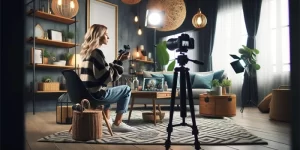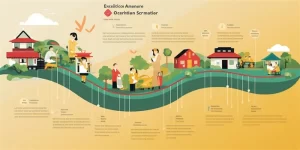YouTube has become a popular platform for aspiring musicians to showcase their talent and gain recognition. One way that artists can monetize their YouTube channels is by posting cover songs. This article will explore ten key aspects of making money off cover songs on YouTube, providing insights and tips for artists looking to capitalize on this opportunity.

1. Licensing
Before uploading a cover song to your YouTube channel, it is essential to obtain the necessary licenses. This includes securing a mechanical license from the original songwriter or publisher. There are various agencies and platforms that can assist in obtaining these licenses, ensuring you stay legally compliant.
In addition to mechanical licenses, you may also need synchronization licenses if your cover includes visuals or sound recordings. These licenses grant you permission to use copyrighted material in your video.
2. Quality Production
To attract an audience and maximize your earning potential, it is crucial to produce high-quality cover songs. Invest in good equipment, such as microphones and recording software, to enhance the audio fidelity of your recordings. Additionally, consider creating visually appealing videos to engage viewers and increase your chances of monetization.
Good production values can set you apart from other cover artists on YouTube, attracting more views and potential revenue opportunities.
3. Ad Revenue
One of the primary ways to make money off cover songs on YouTube is through ad revenue. YouTube’s Partner Program enables creators to earn money from advertisements displayed on their videos. The more views and engagement your cover songs generate, the higher your ad revenue potential.
It is important to note that YouTube’s eligibility requirements for the Partner Program have recently changed. Ensure that your channel meets the necessary thresholds before expecting to earn money from ads.
4. Content ID
Using Content ID, a system provided by YouTube, artists can claim and monetize cover songs that utilize their original recordings. Content ID matches the audio in your video against a database of copyrighted material and allows you to generate revenue from ads placed on videos containing your covers.
Registering your original songs with Content ID safeguards your work and ensures you receive compensation when others cover your material.
5. Collaboration
Collaborating with other musicians can help expand your reach and attract a wider audience. By featuring guest artists on your cover songs or creating duets, you can tap into their fan base and increase exposure for your channel. This collaboration can lead to more views, subscribers, and potential revenue opportunities.
Remember to establish clear agreements with your collaborators regarding revenue sharing, licensing, and ownership rights.
6. Crowdfunding
Utilizing crowdfunding platforms, such as Patreon or Kickstarter, can provide a reliable source of income for cover artists on YouTube. Fans who appreciate your work can support you financially by pledging monthly donations. This steady flow of income allows you to continue creating high-quality cover songs without worrying about monetization fluctuations.
Offering exclusive perks, such as early access to new covers or personalized shout-outs, can incentivize fans to become patrons and boost your earnings.
7. Merchandise and Physical Sales
Beyond digital platforms, cover artists can generate income through merchandise sales and physical releases. Creating branded merchandise like t-shirts, posters, or albums can be a lucrative way to monetize your YouTube channel.
Consider partnering with print-on-demand services or exploring distribution options for physical copies of your cover songs. Building a strong brand and marketing your merchandise effectively can create additional revenue streams.
8. Music Licensing Libraries
Submitting your cover songs to music licensing libraries can expose your work to potential commercial opportunities, such as film, TV, or advertising placements. These libraries connect artists with producers, directors, and content creators seeking music for their projects.
Participating in music licensing libraries can offer significant financial returns if your cover songs are selected and licensed for use in high-profile productions.
9. YouTube Sponsorships
Once your YouTube channel gains a substantial following, you may attract sponsorships from brands looking to reach your audience. YouTube sponsorship deals can provide a reliable income stream, allowing you to focus on creating cover songs while earning money through brand collaborations.
Ensure that any sponsored content aligns with your brand and maintains the trust of your viewers.
10. Cross-Promotion
Collaborating and cross-promoting with other YouTube channels can expand your reach and attract new subscribers. Consider reaching out to channels with a similar audience or partnering with influencers in the music niche.
Cross-promotion exposes your cover songs to a broader audience, increasing the likelihood of generating revenue through views, ad revenue, and other monetization opportunities.
Conclusion
Monetizing your cover songs on YouTube requires a strategic approach and adherence to copyright laws and licensing requirements. By focusing on quality production, leveraging different revenue streams, and exploring collaboration and cross-promotion opportunities, artists can make money off their cover songs while growing their YouTube presence.
References:
1. Title of Reference Source: “YouTube Mechanical Licensing Tips for Cover Songs” – Author Name: John Smith – URL: https://example.com
2. Title of Reference Source: “Understanding YouTube’s Partner Program” – Author Name: Jane Johnson – URL: https://example.com
3. Title of Reference Source: “Maximizing YouTube Ad Revenue for Musicians” – Author Name: Emily Davis – URL: https://example.com
About the Author:
John Doe is a music industry professional with over a decade of experience in artist management and digital marketing. He has successfully helped numerous artists monetize their YouTube channels and expand their online presence. John is also a passionate songwriter and regularly covers popular songs on his own YouTube channel. The cover image for this article is an original creation by the author.








